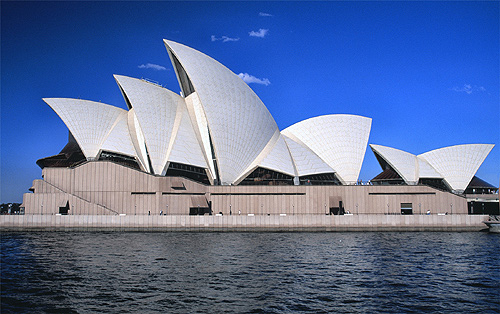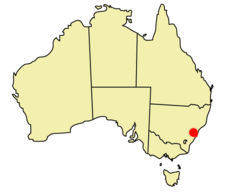Sydney Travel Guide

Related Pages | |||
About Sydney
Sydney is to Australia what London is to England and Paris is to France. It is the capital city of the state of New South Wales and easily the most recognisable city in Australia.
Sydney has a reputation as an international centre for commerce, arts, culture, entertainment, and tourism. The city is the biggest gateway into Australia for international tourists with Kingsford Smith Airport being the main place for international and national flights in Australia.
Introduction
 Established in 1788, Sydney is the oldest city in Australia. There are over four and a half million inhabitants today that live in this beatutiful city built around one of the most spectacular harbours in the world. This harbour has its main ferry terminal at Circular Quay where views of downtown Sydney, the Sydney Opera House, and Sydney Harbour Bridge are located. The Opera House and Harbour Bridge are often associated with not just Sydney but representative of Australia. To the west of the city centre is a tourist hot spot called 'The Rocks'. It is the historic part of the city as it is the location for the first settlement in Sydney. Today it is a great place to explore heritage buildings and enjoy a coffee at one of the local coffee houses. Fine restaurants and boutique shops are plenty with views of the city skyline and harbour from here too.
Established in 1788, Sydney is the oldest city in Australia. There are over four and a half million inhabitants today that live in this beatutiful city built around one of the most spectacular harbours in the world. This harbour has its main ferry terminal at Circular Quay where views of downtown Sydney, the Sydney Opera House, and Sydney Harbour Bridge are located. The Opera House and Harbour Bridge are often associated with not just Sydney but representative of Australia. To the west of the city centre is a tourist hot spot called 'The Rocks'. It is the historic part of the city as it is the location for the first settlement in Sydney. Today it is a great place to explore heritage buildings and enjoy a coffee at one of the local coffee houses. Fine restaurants and boutique shops are plenty with views of the city skyline and harbour from here too.
Geography and climate
Sydney's climate is temperate with warm to hot summers and mild winters.At the peak of summer temperatures can reach into the 40s (100s farenheit) and you can get snow in winter on the nearby Blue Moutains. On average Sydney has 340 sunny days a year.
Getting around
Sydney's has an excellent public transport system that includes, an underground rail network, buses, trams, and ferries. Daily or weekly passes allow you to travel on a number of these transport options giving you the freedom to explore the city and outer suburbs.
Places to see
The CBD is home to finance and big business as can be seen in the myriad of big buildings reaching skyward and huddled together. At ground level there is a huge selection of shops, malls, fine restaurants, and fast food outlets.
Just west of the CBD is popular 'Darling Harbour', the location for many hotels, restaurants, museums, walks, and entertainment venues. Darling Harbour is accessible via the monorail or a ferry from Circular Quay, but is also within walking distance from the CBD.
The southern part of the CBD is home to China Town, Haymarket, and more great cafes and shops. The east is famous for Kings Cross a thriving night-life area and also known as the red light district.
For great sweeping views over Sydney and beyond, go no further than the Sydney Tower. The views of the Sydney CBD from here are breathtaking with a 360 degree viewing platform giving unhindered views of The Rocks, harbour, the Tasman Sea, and out west beyond the suburbs and toward the scenic Blue Mountains.
Natural highlights
Coastal areas and the harbour are the standout natural feature of Sydney. With many boat trips that explore the harbour and many beaches, bays, inlets, and rivers, Sydney is a city surrounded by water. There are around 70 significant harbour and ocean beaches in the urban area which include coastal gems like Bondi and Manly.
The city also has plenty of beautiful parks that offer solitude from the hustle and bustle of the big city. More notable parks include The Royal Botanic Gardens and Hyde Park.
Beyond Sydney
The hinterland around Sydney contains smaller settlements and a number of national parks.
The Blue Mountains on the western edge of the city is a popular national park for visitors. Situated at a higher altitude than the coastal plain where Sydney is situated, the temperature is noticably cooler and provides relief from hot temperatures in summer. During winter, this area can receive snow, so make sure you bring a jacket even if Sydney is warm. The Blue Mountains is divided into several national parks. It is best described as a series of canyons carved out of the Great Dividing Range, which is Australia's biggest mountain range. The area is heavily forested with steep cliff walls and spectacular waterfalls. Wildlife abounds with many species of birds, bats, kangaroos, wallabies, gliders, bandicoots, and brown antechinuses. Rarer animals include koalas and quolls. Noctural animals here include possums and the echidna. Like the rest of Australia there are many species of snakes and lizards and other amphibians and reptiles. Flora consists of eucalypts, ferns, and a mix of open forest and rainforest species.
If you venture further west of the Blue Mountains, you start to enter rural New South Wales. Consisting of rolling green hills and plains it is populated mainly by sheep and cattle with even some wildlife including emus and kangaroos in and near forested farmland. Yellow Canola fields, purple lavender, and other crops give the area some rural colour. Towns such as Bathurst and Orange serve as centres for the rural economy in the area. If you continue in a westward direction, the landscape will eventually become increasingly arid and less populated as you head toward the harsh Australian outback.
To the north of Sydney is Ku-Ring-Gai Chase National Park a world heritage listed park, that has both rich Aboriginal importance and scenic beauty. The park protects much of Sydney’s waterways, so swimming is popular. Included is Hawkesbury River which offers the chance for a boat cruise through some spectacular natural landscapes and native forests. Cruises start at a number of locations including Sydney's most northern beach, Palm Beach and head up the river to settlements with no road access. You can even take the Postman Cruise as they deliver the mail to these remote settlements.
To the south of Sydney lies Royal National Park and the scenic Illiwarra region which offers great coastal views from the steep hills behind the coast and a chance to explore the city of Wollongong.
Author & photographer: David Johnson (Virtual Australia). Providing a credit or link is appreciated.
Our content: logos, site names, text, photos, and website design are protected by international copyright law.
Original versions of our photos can be purchased / licensed & web versions can be shared subject to conditions.








